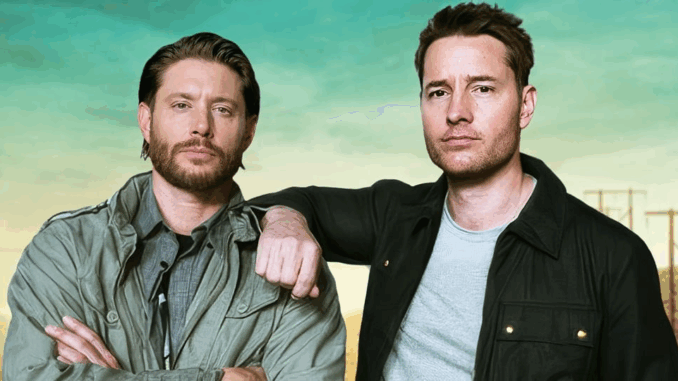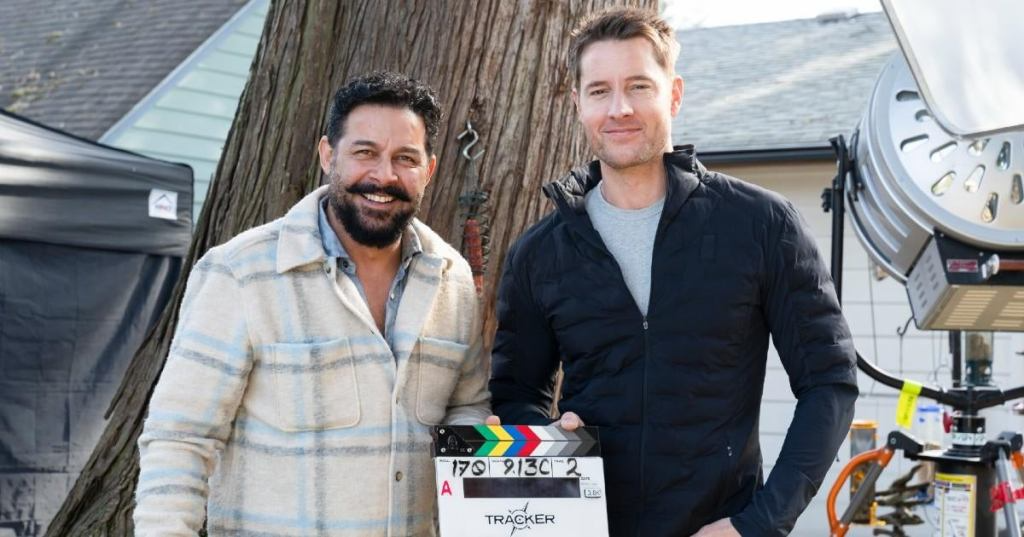
Justin Hartley has proven time and again that he is more than just a charming face on television. His seamless transition from the emotionally intricate role of Kevin Pearson in This Is Us to the rugged and mysterious Colter Shaw in Tracker is a testament to his impressive range as an actor. While both characters inhabit very different worlds, each role highlights unique aspects of Hartley’s talent—and reveals how he continues to evolve in Hollywood.
Kevin Pearson: The Vulnerable Heart of This Is Us
For six seasons, Justin Hartley portrayed Kevin Pearson, the middle triplet in the emotionally rich NBC drama This Is Us. Kevin’s journey was marked by inner turmoil, broken relationships, and a desperate search for purpose. Hartley’s performance dug deep into the psyche of a man burdened by fame, addiction, and the weight of family expectations.
Hartley infused Kevin with sincerity, allowing audiences to see beyond the Hollywood heartthrob facade to a man longing for stability and meaning. Whether it was Kevin’s complicated relationship with his father’s memory, his on-again-off-again love with Sophie, or his struggle with sobriety, Hartley’s nuanced portrayal often left viewers in tears. It was a deeply human performance that required vulnerability, emotional honesty, and an understated strength.
Colter Shaw: The Lone Wolf of Tracker
In Tracker, Justin Hartley takes a complete left turn. Colter Shaw is a survivalist, investigator, and reward-seeker who roams the country in search of missing people and fugitives. Unlike Kevin Pearson, Colter is not motivated by emotions or family—at least not on the surface. He is sharp, observant, physically capable, and emotionally guarded.
Hartley brings a grounded intensity to the role. Colter is a man shaped by trauma and an unconventional upbringing, and his detachment is both his strength and his weakness. The physicality of the role—chasing suspects, solving crimes, and surviving off the grid—requires Hartley to tap into his action-hero side, something audiences saw glimpses of in his earlier roles but never at this level of complexity.

Comparing the Emotional Core
While Kevin Pearson and Colter Shaw exist in vastly different universes, they share one thing: a deep emotional undercurrent. Kevin is often ruled by his emotions, struggling to understand them and express them in healthy ways. Colter, on the other hand, suppresses his emotions to stay focused on his mission.
Yet both men are ultimately seeking connection—Kevin with his family and future, Colter with a truth buried in his past. Hartley plays both characters with an undercurrent of unresolved pain that humanizes them. In This Is Us, Kevin’s vulnerability is on full display. In Tracker, Colter’s vulnerability is masked by resilience but hinted at in quieter moments—his conversations with clients, his flashbacks to family trauma, his moments of solitude.
Performance Styles: From Ensemble to Solo Lead
One of the most striking differences is the format of the shows themselves. This Is Us was a sprawling ensemble drama, giving Hartley a strong supporting cast to interact with. The chemistry between the “Big Three” siblings, the parents, and extended family was key to the show’s success. In contrast, Tracker is largely a solo vehicle. Colter Shaw works alone, and while guest stars and recurring characters appear, Hartley carries the majority of screen time by himself.
This shift required Hartley to command the screen in a different way—projecting a presence that’s quieter, more internal, and more strategic. It also gave him the freedom to shape a role from the ground up, without relying on the emotional scaffolding of a family saga.
Appearance and Physicality
Kevin Pearson was clean-cut, stylish, and Hollywood-polished. His appearance reflected his career as an actor and his need to maintain a public image. Colter Shaw, in contrast, is rugged, often unshaven, dressed for utility, and rarely in one place long enough to care about appearances. This physical transformation supports the narrative shift: Hartley is no longer just delivering emotion—he’s delivering action.
That said, both roles require a certain vulnerability in their body language. Kevin slouched under the weight of his emotions; Colter remains alert, always ready for danger. Hartley’s attention to posture, eye contact, and silence is part of what makes both characters believable.
Audience Reaction and Career Impact
This Is Us elevated Justin Hartley’s reputation, turning him from a soap opera alum and CW superhero into a respected dramatic actor. It showcased his ability to tackle emotional depth with maturity and grace. With Tracker, he’s reaching a different audience—fans of action, crime dramas, and procedural mysteries. It’s also allowed Hartley to step into a producer role, shaping the creative direction of a show from behind the scenes.
Both series mark important chapters in his career, but they also demonstrate a purposeful evolution: from ensemble cast member to leading man, from emotionally driven character to enigmatic action hero.
Conclusion: One Actor, Two Worlds
Justin Hartley’s transformation from Kevin Pearson to Colter Shaw is not just a genre shift—it’s a masterclass in range. Whether navigating emotional landmines in This Is Us or tracking fugitives across dangerous terrain in Tracker, Hartley proves that he’s a force to be reckoned with in any setting. His ability to embody such contrasting characters without losing authenticity is what sets him apart in today’s television landscape.
And for fans, it’s a gift to witness both sides of this multifaceted actor—soft and soulful in one world, sharp and solitary in another. Justin Hartley isn’t just playing roles—he’s building a legacy.
